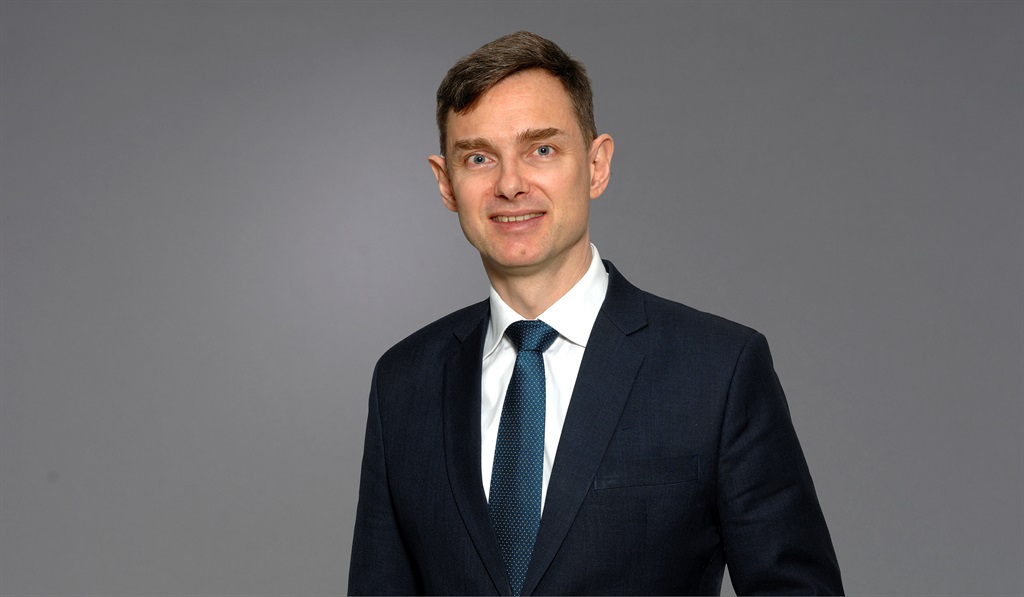
Dr Maximilian Martin, global head of philanthropy at Lombard Odier, has dedicated a great part of his professional life to help individuals and businesses to give.
Global giving is growing, gaining visibility and creating much-needed change around the world, according to a global philanthropy report by the Swiss multinational investment bank and financial services company, UBS Group AG. It states that over time and across geographies, the world has witnessed a near-universal charitable instinct to help others.
Wealthy individuals, families and corporations are indeed looking to give more. This has been witnessed in recent years with the formation of The Giving Pledge in 2010 by Warren Buffett and Bill and Melinda Gates.It is a commitment by the world’s wealthiest individuals and families to give back, at least half of their wealth. Those who have taken the pledge include Mark Zuckerberg and Dr PriscillaChan, Elon Musk, Strive and Tsitsi Masiyiwa, Patrice and Dr Precious Motsepe.
The Covid-19 pandemic magnified SouthAfrica’s pre-existing vulnerabilities and we were faced with an irreversible humanitarian and economic crisis that would permanently change the world as it were. Some of the country’s wealthiest families, the Ruperts, Oppenheimers and Motsepes, stepped up to the plate, pledging a billion rand each to assist with the pandemic and its related challenges and inequalities.
Giving is, however, transcending the one percent that one would vow that establishing a foundation is the “in” thing now.
The surge is, of course, very
much welcomed as it is plainly evident that, alas, there is only so much that governments, especially in developing nations, can do.
When finweek ran a story looking into private banking clients’ needs and the services that come with such accounts in the 4 February edition, we found that local banks have also caught on and now have in-house philanthropy offices dedicated to helping wealthy clients give.
It is obviously very simple for most high-net- worth individuals (HNWIs) to make cash transfers to charitable causes of their choice – transactions that take a split second to perform, but there is a growing inclination to give in a sustainable way, to give more strategically and to increase the impact of social investments – rather than just merely making donations.
Dr Maximilian Martin is the global head of philanthropy at Lombard Odier, an independent Swiss banking group based in Geneva. On the reason why he chose to centre his studies on economics and anthropology, up to PhD level, and later dedicated a great part of his professional life “using market mechanisms to help do good”, he says, “I found using a market approach for development objectives, fascinating”.
Back in the early 2000s, before the term “impact investing” came into existence, Martin says he had a realisation, while conducting research for a business plan to present to banks about building philanthropy units, that “there are a lot of well- connected, powerful people in corporate and private wealth positions who want to do something positive but don’t really know how to do it, because there is an intermediation gap”.
Martin found that 20% of HNWIs were interested in social investing and says it is an interesting way for banks to add value to client relationships if 20% of clients are interested in philanthropy.
UBS liked Martin’s proposal and hired him to build their philanthropy unit, “the first time in Europe that such a unit was built”. It then became a global unit, providing advisory services to set up similar structures and provide advisory in the fields of social entrepreneurship and investing. He says that this was at a time when impact investing was beginning to take off.
Impact investing
Martin formed part of the 2007 Rockefeller Foundation conference in Bellagio, Italy, that coined the term “impact investing”. Impact investments are made with the intention to generate positive, measurable social and environmental impact alongside a financial return, he explains. They target a range of returns from below market to market rate, depending on investors’ strategic goals.
Lombard Odier approached him in 2016 to help cultivate this offering at the bank, where he has been since.
“Business can be a force for good in society but it needs to be very concrete in terms of how to do it. You need to move beyond the level of declarations and engage in concrete action,” he says. Martin explains that Lombard Odier has a corporate foundation (Fondation Lombard Odier), to finance projects. “Here, it is really important to be very focused, because it is not possible to solve all problems and do everything.” The foundation is mainly involved in the fields of education and humanitarian action.
In the humanitarian space, Martin says according to the latest data from the United Nations, 54% of humanitarian needs are being funded mainly through donor governments. “This is not enough, with needs rising, we need to think of different ways of bringing in more capital and being more efficient as well.”
The International Committee of the Red Cross (ICRC), which has an historical relationship with Lombard Odier, expressed a wish to diversify its funding model to “start experimenting with new financing models and we helped them put together what we call, the humanitarian impact bond,” he says.
“The strategic idea here was to say, we are a financial institution and we understand how finance works but through the corporate foundation, we want to put incubation money on the table and add some expertise as well, to help our grantees to do things that are necessary but are very difficult to finance out of budget.”
Dubbed the Programme for Humanitarian Impact Investment (PHII), it was launched in 2017 and it is the first private debt instrument in the humanitarian sector that links social results with financial returns for its investors, according to Fondation Lombard Odier. The purpose of this new form of financing
is to obtain a higher level of overall investment in philanthropic projects than if they were supported solely by donations. “This is an impact bond whereby a group of private social investors pre-finance the project ... if the project achieves the objectives, then a group of so-called outcome funders (the governments of Belgium, Italy, Switzerland and the UK, as well as the La Caixa Foundation in Spain) buy the result and provide a financial return to the investors who have taken the risk upfront,” Martin explains.
The funds were
transferred to the ICRC to finance the construction of three state-of-the-art
physical rehabilitation centres in Mali, Nigeria and the DRC, to provide rehabilitation
care, as well as prosthetic and orthotic devices and wheelchairs to local people, who are often
victims of armed conflict in these regions.
Measuring impact
Once these centres have been built by 2022, their activities will be monitored for two years and assessed based on objective criteria, such as the number of patients who have gained autonomy due to the services provided, measuring the overall performance of the staff and the centre. The data will be analysed to create a project success index, which will be used to assess the centres’ productivity gains and will determine the financial return for investors.
Martin says the arrangement creates capital market discipline, in a sense. “There is an operating committee around it, it is managed as an investment. At the same time, it offers a risk transfer from the public sector to the private investor, who takes the upfront risk. So, if it doesn’t work at all, the private investors can take a haircut of 40%; in that case, 50% is still reimbursed by the outcome funders and 10% by the ICRC who have some skin in the game as well. It is a new way of having private impact investors partner with international organisations and bilateral donors,” he says.




 Publications
Publications
 Partners
Partners













